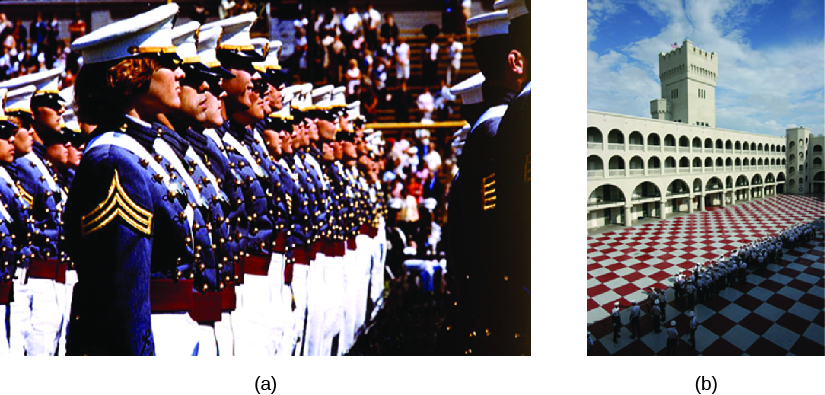IDENTIFYING DISCRIMINATION
Laws that treat one group of people differently from others are not always unconstitutional. In fact, the government engages in legal discrimination quite often. In most states, you must be eighteen years old to smoke cigarettes and twenty-one to drink alcohol; these laws discriminate against the young. To get a driver’s license so you can legally drive a car on public roads, you have to be a minimum age and pass tests showing your knowledge, practical skills, and vision. Perhaps you are attending a public college or university run by the government; the school you attend has an open admission policy, which means the school admits all who apply. Not all public colleges and universities have an open admissions policy, however. These schools may require that students have a high school diploma or a particular score on the SAT or ACT or a GPA above a certain number. In a sense, this is discrimination, because these requirements treat people unequally; people who do not have a high school diploma or a high enough GPA or SAT score are not admitted. How can the federal, state, and local governments discriminate in all these ways even though the equal protection clause seems to suggest that everyone be treated the same?
The answer to this question lies in the purpose of the discriminatory practice. In most cases when the courts are deciding whether discrimination is unlawful, the government has to demonstrate only that it has a good reason for engaging in it. Unless the person or group challenging the law can prove otherwise, the courts will generally decide the discriminatory practice is allowed. In these cases, the courts are applying the rational basis test. That is, as long as there’s a reason for treating some people differently that is “rationally related to a legitimate government interest,” the discriminatory act or law or policy is acceptable.Cornell University Law School: Legal Information Institute. “Rational Basis,” https://www.law.cornell.edu/wex/rational_basis (April 10, 2016); Nebbia v. New York, 291 U.S. 502 (1934). For example, since letting blind people operate cars would be dangerous to others on the road, the law forbidding them to drive is reasonably justified on the grounds of safety; thus, it is allowed even though it discriminates against the blind. Similarly, when universities and colleges refuse to admit students who fail to meet a certain test score or GPA, they can discriminate against students with weaker grades and test scores because these students most likely do not possess the knowledge or skills needed to do well in their classes and graduate from the institution. The universities and colleges have a legitimate reason for denying these students entrance.
The courts, however, are much more skeptical when it comes to certain other forms of discrimination. Because of the United States’ history of discrimination against people of non-white ancestry, women, and members of ethnic and religious minorities, the courts apply more stringent rules to policies, laws, and actions that discriminate on the basis of race, ethnicity, gender, religion, or national origin.United States v. Carolene Products Co., 304 U.S. 144 (1938).
Discrimination based on gender or sex is generally examined with intermediate scrutiny. The standard of intermediate scrutiny was first applied by the Supreme Court in Craig v. Boren (1976) and again in Clark v. Jeter (1988).Craig v. Boren, 429 U.S. 190 (1976); Clark v. Jeter, 486 U.S. 456 (1988). It requires the government to demonstrate that treating men and women differently is “substantially related to an important governmental objective.” This puts the burden of proof on the government to demonstrate why the unequal treatment is justifiable, not on the individual who alleges unfair discrimination has taken place. In practice, this means laws that treat men and women differently are sometimes upheld, although usually they are not. For example, in the 1980s and 1990s, the courts ruled that states could not operate single-sex institutions of higher education and that such schools, like South Carolina’s military college The Citadel, shown in Figure, must admit both male and female students.Mississippi University for Women v. Hogan, 458 U.S. 718 (1982); United States v. Virginia, 518 U.S. 515 (1996). Women in the military are now also allowed to serve in all combat roles, although the courts have continued to allow the Selective Service System (the draft) to register only men and not women.Matthew Rosenberg and Dave Philipps, “All Combat Roles Open to Women, Defense Secretary Says,” New York Times, 3 December 2015; Rostker v. Goldberg, 453 U.S. 57 (1981).

Discrimination against members of racial, ethnic, or religious groups or those of various national origins is reviewed to the greatest degree by the courts, which apply the strict scrutiny standard in these cases. Under strict scrutiny, the burden of proof is on the government to demonstrate that there is a compelling governmental interest in treating people from one group differently from those who are not part of that group—the law or action can be “narrowly tailored” to achieve the goal in question, and that it is the “least restrictive means” available to achieve that goal.Johnson v. California, 543 U.S. 499 (2005). In other words, if there is a non-discriminatory way to accomplish the goal in question, discrimination should not take place. In the modern era, laws and actions that are challenged under strict scrutiny have rarely been upheld. Strict scrutiny, however, was the legal basis for the Supreme Court’s 1944 upholding of the legality of the internment of Japanese Americans during World War II, discussed later in this chapter.Korematsu v. United States, 323 U.S. 214 (1944). Finally, affirmative action consists of government programs and policies designed to benefit members of groups historically subject to discrimination. Much of the controversy surrounding affirmative action is about whether strict scrutiny should be applied to these cases.